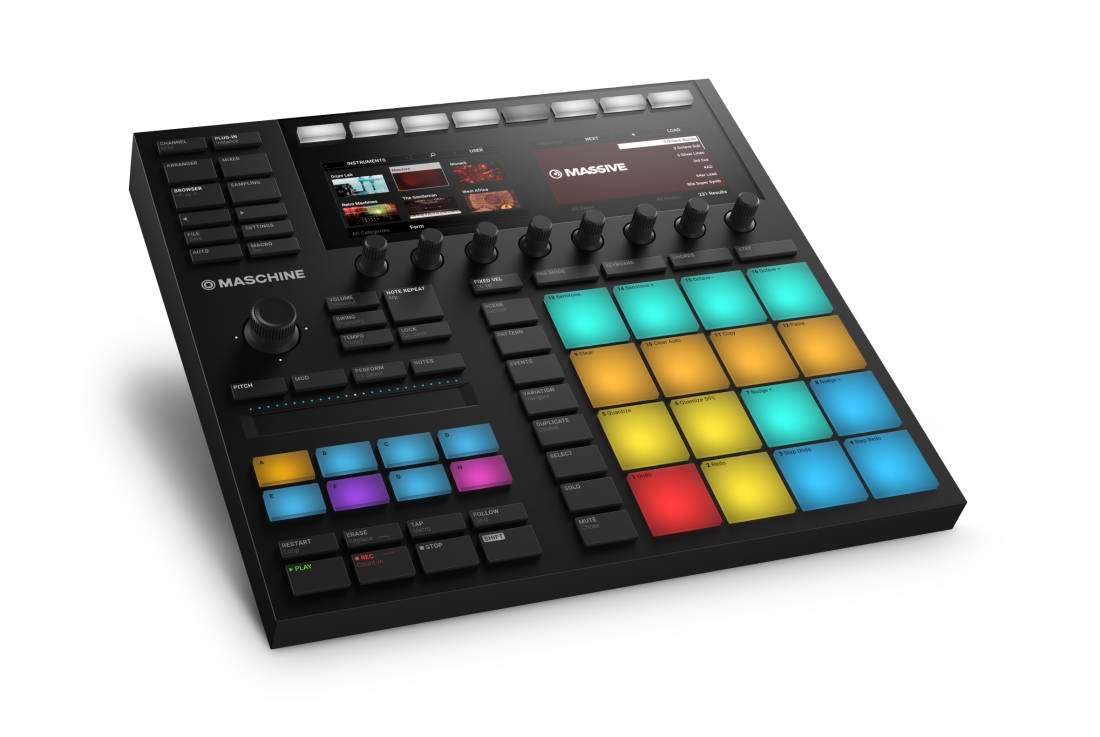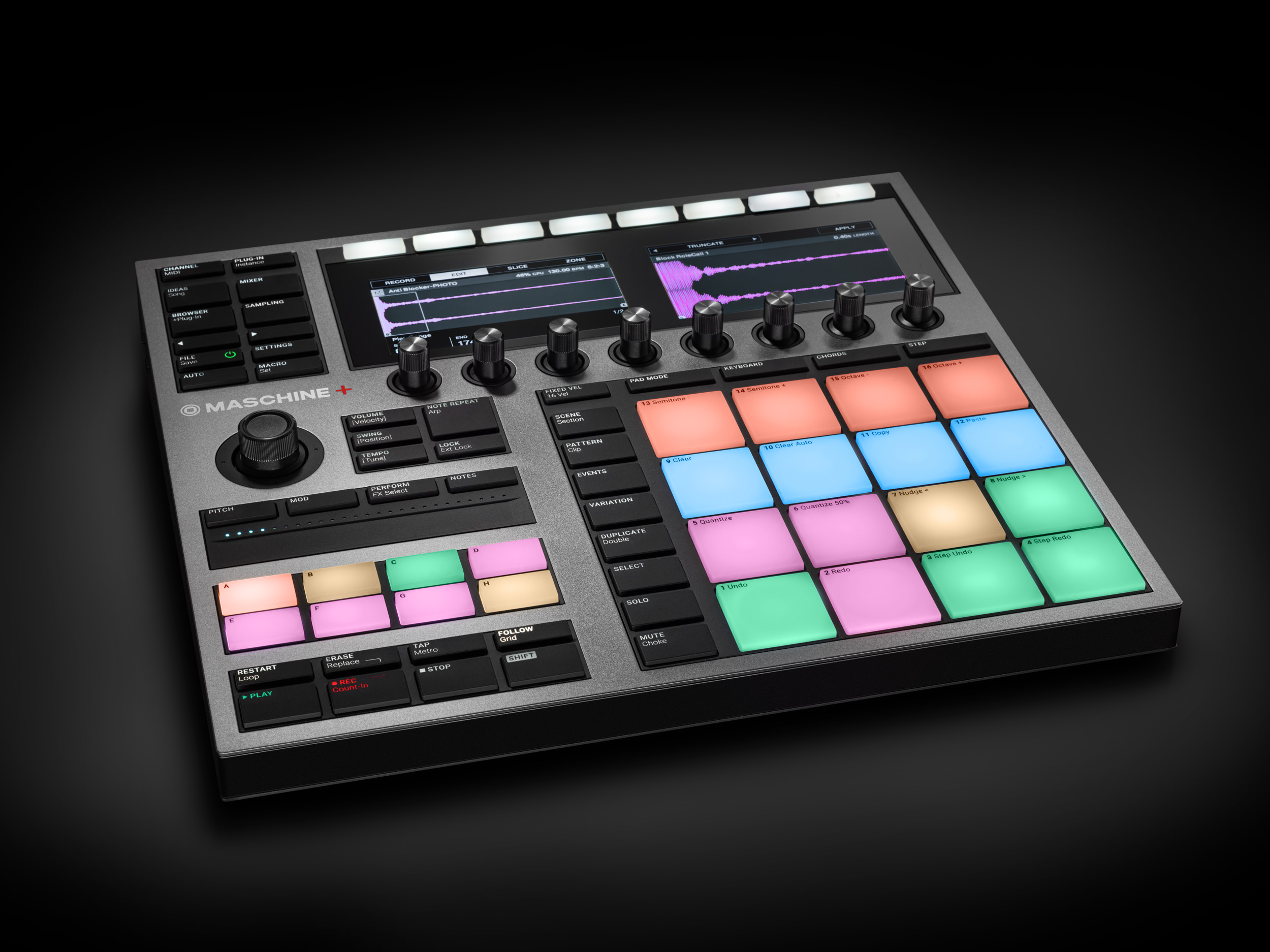


The Pad mode, which provides special colour coding for kicks, snares and other sounds, is suitable for beats. The 16x back-lit pads of the Maschine Mikro Mk3 are more than just a pretty face, they also hide a lot of potential beneath the surface. In combination with the new, larger pads, making music feels even more natural than in previous incarnations.

Discover new ways to express yourself musically - swipe your fingers over the Smart Strip to strike sounds or change and experiment creatively with effects. Selection and navigation is painless with the Mikro Mk3 due to an intuitive and logical controller surface. Mikro was designed to enable making music with a laptop a simple endeavour, so you can concentrate on the quick creation of your own music. Maschine Mikro Mk3 works both as a stand-alone program and with a DAW, so you can produce music at any time. The Maschine Mikro Mk3 is a plug-and-play device, connected via USB: use up to 24x effects for special sound processing, vary your tracks with randomly generated patterns at the touch of a button, use the Lock button to try out new variations of the track without losing the original settings and create your own kicks, snares, hi-hats and more with the integrated synths. The Native Instruments Maschine Mikro Mk3 is the slimmer, simpler and more expressive version of the world's most popular drumbeat controller. If you want a polyphonic synth then build it inside of one instrument.Maschine Mikro Mk3 Native Instruments Maschine Mikro Mk3 So believe me building a monophonic synth only using blocks is a really nice feature (not only for noobies) and starting point. a polyphonic MONARK) with blocks the voice management is in your hands. If you want to build a polyphonic synth (say f.i. If you build a polyphonic synth in REAKTOR (as an instrument) you can choose nice modules and increase the number of voices without inserting other modules. If you want to build a polyphonic synth only with blocks you have to leave the wonderful polyphonic path of REAKTOR. Perhaps those users will in future dive deeper and build a polyphonic instruments (like in REAKTOR 5 but better). But there is a great advantage, because it is no problem to add and delete some blocks and rearrange on panel. The idea is to make it very simple, so building with blocks is a good choice, although they receive and send only monophonic signals.
.jpg)
Say if you have a kind of audio tremolo Block after a polyphonic Block playing a chord so you'll have just all the audio stream wobbling as a whole thing opposite to a more cool way when each individual voice wobble by itself individually.Ĭlick to expand.REAKTOR Blocks are made as an easy start into REAKTOR, made for those (new) users who never built a synth in REAKTOR. After the voices are combined at the final stage of the Block they still are chords obviously by hearing, but each individual voice now can't be processed by downstream Blocks individually, only the mix of them. So the point to have a polyphonic Block is the ability to play chords, or any kind of polyphonic music activity. But the moment you get the polyphonic music playing from monophonic audio output you loose the ability to tweak instruments individually, though you can add, say, a reverb to all of them now. They play some chords, obviously, not just one single instrument melody at a given time. Ok? It's mono, but the music playing from this mono audio output is polyphonic in terms of common musical sense, let's say it is a band playing. But let's say we are in 40-s so our mixer have just one mono output. We have several lines inside of a real world hardwire mixer, we can eq them, change volume, etc.


 0 kommentar(er)
0 kommentar(er)
